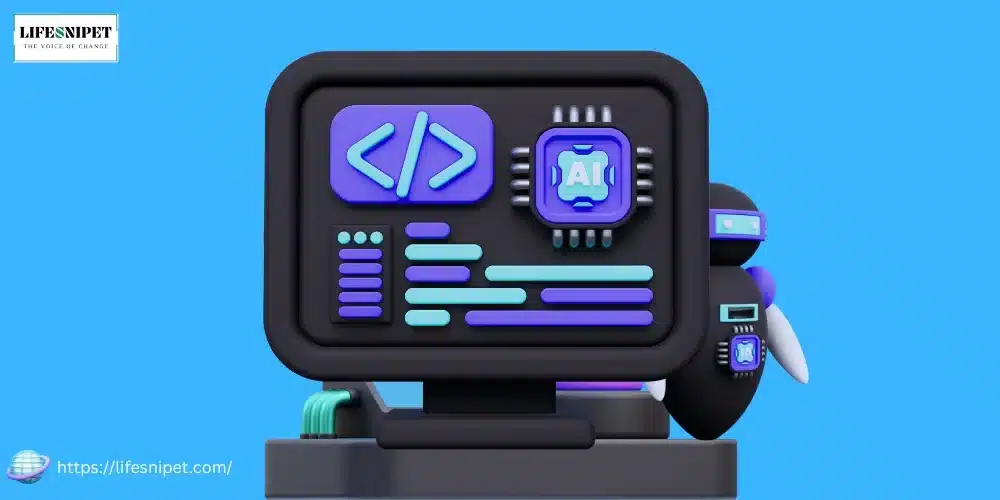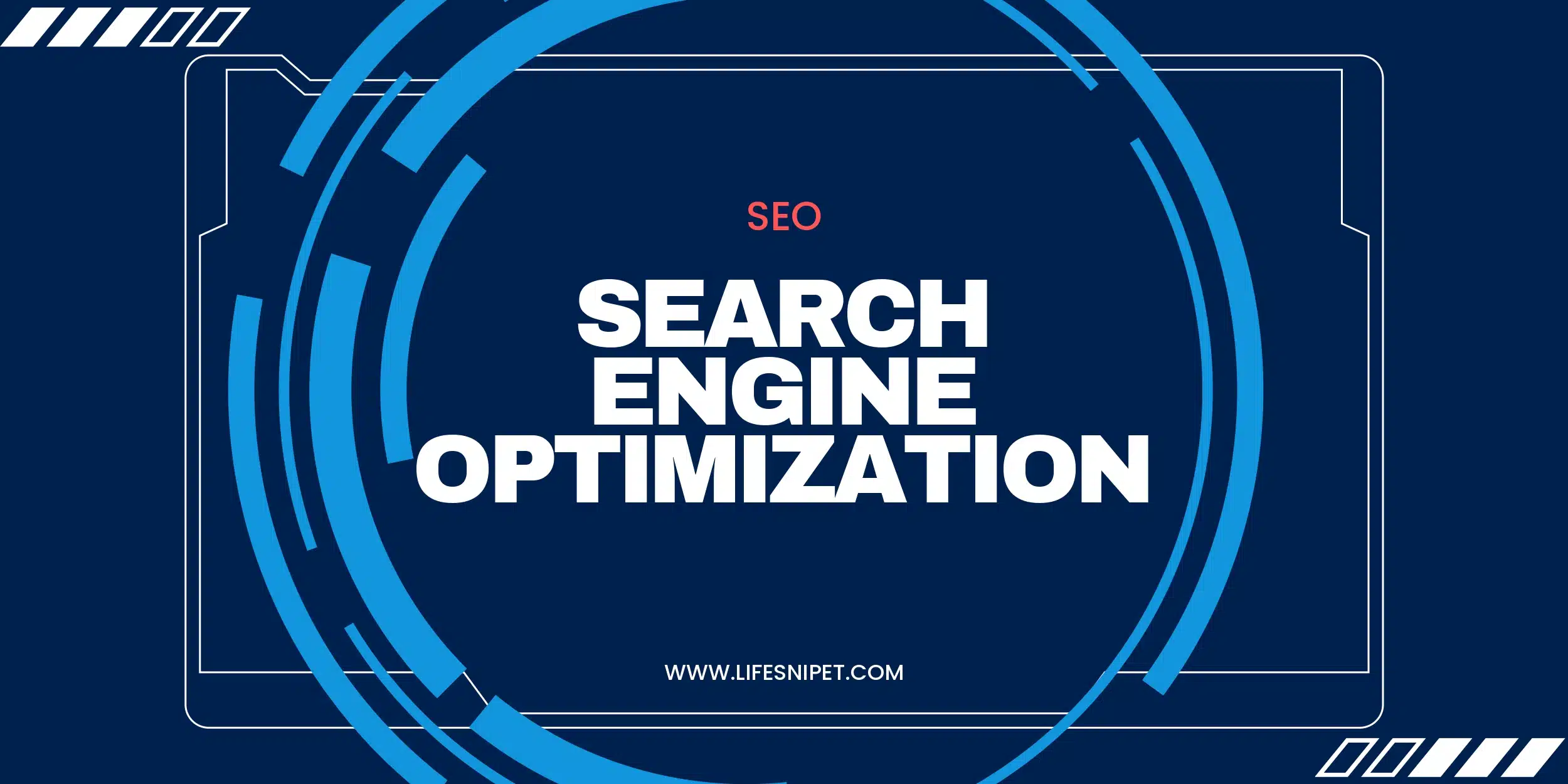Introduction Software Development Industry
The software development industry has experienced remarkable growth and transformation in recent years, becoming a cornerstone of the global economy. This sector encompasses a wide range of activities, including the creation, design, testing, and maintenance of software applications and systems. As of my last knowledge update in January 2022, I don’t have real-time data, but I can provide insights into the trends and growth patterns observed up to that point.
1. Industry Overview:
The software development industry has evolved rapidly with technological advancements, driving innovation across various domains. From mobile applications to enterprise software, the demand for custom solutions has surged, leading to the establishment of numerous software development companies worldwide.
2. Revenue and Market Size:
The industry’s revenue has witnessed substantial growth, reflecting the increasing reliance on digital solutions across businesses and consumers. In 2021, the global software market was valued at over $500 billion and it is projected to continue its upward trajectory.
3. Key Growth Drivers:
- Digital Transformation: Businesses are increasingly embracing digital transformation, fueling demand for software solutions that enhance efficiency and competitiveness.
- Cloud Computing: The adoption of cloud-based services has revolutionized software delivery, enabling scalability and accessibility.
- Artificial Intelligence and Machine Learning: Integration of AI and ML technologies has become prevalent, enhancing software capabilities across various sectors.
- Remote Work: The rise of remote work has increased the demand for collaboration tools, productivity software, and solutions supporting distributed teams.
4. Future Trends and Changes:
- 5G Technology: The widespread rollout of 5G is expected to accelerate the development of innovative applications, particularly in areas like augmented reality, virtual reality, and the Internet of Things (IoT).
- Edge Computing: Edge computing is gaining prominence, allowing data processing closer to the source, reducing latency, and enhancing real-time capabilities.
- Cybersecurity Focus: As digital threats continue to evolve, there’s a growing emphasis on integrating robust cybersecurity measures into software development processes.
- Low-Code/No-Code Development: The rise of low-code/no-code platforms is democratizing software development, enabling individuals with limited coding experience to create applications.
5. Challenges:
- Talent Shortage: There needs to be more skilled software developers, creating a competitive hiring landscape.
- Security Concerns: With the increasing complexity of software systems, ensuring robust security measures remains a significant challenge.
- Rapid Technological Changes: The industry must adapt quickly to emerging technologies, requiring continuous upskilling and flexibility.
Understanding the Role of Artificial Intelligence in Software Development
Artificial Intelligence (AI) has become a transformative force in the field of software development, revolutionizing how applications are designed, implemented, and maintained. The intersection of AI and software development represents a paradigm shift, introducing efficiency, innovation, and enhanced capabilities.
1. Exploring the Intersection of AI and Software Development:
- Automated Code Generation: AI-powered tools are increasingly being utilized for code generation, automating the process of writing repetitive or boilerplate code. This not only accelerates development but also reduces the likelihood of errors.
- Intelligent Debugging: AI algorithms can analyze code for bugs and anomalies, aiding developers in identifying and fixing issues more efficiently. This proactive approach enhances the quality of software by minimizing the chances of runtime errors.
- Predictive Analytics: AI enables predictive analytics in software development, helping teams forecast potential challenges, estimate project timelines, and optimize resource allocation. This data-driven approach enhances project planning and decision-making.
- Natural Language Processing (NLP): NLP capabilities in AI facilitate better communication between developers and computers. It allows developers to interact with systems using natural language, streamlining tasks such as code search, documentation, and even requirement analysis.
- Machine Learning Integration: AI-driven machine learning algorithms find applications in predictive modeling, pattern recognition, and data analysis within software development. This integration enhances the ability to derive insights from large datasets, making applications more intelligent and adaptive.
2. The Transformative Power of AI in Modern Software Projects:
- Enhanced Efficiency: AI streamlines development processes, reducing manual effort in tasks like code review, testing, and maintenance. This efficiency allows developers to focus on higher-level, creative aspects of software design.
- Smart Automation: AI-driven automation tools contribute to the creation of smart, self-optimizing systems. Continuous integration and deployment processes benefit from AI’s ability to automate routine tasks, ensuring faster and more reliable software delivery.
- Quality Improvement: AI algorithms can analyze and predict potential vulnerabilities, enhancing the security of software. Additionally, automated testing with AI helps identify and address bugs early in the development cycle, leading to higher-quality software releases.
- Personalization and User Experience: AI plays a crucial role in creating personalized user experiences. Through data analysis and machine learning, software applications can adapt to user preferences, providing a more tailored and engaging interaction.
- Innovation and Future-Proofing: AI fosters innovation by enabling the development of intelligent applications capable of learning and evolving. This future-proofing aspect is crucial in an ever-changing technological landscape.
Practical Applications of Artificial Intelligence in Software Development
Artificial Intelligence (AI) has become a cornerstone in modern software development, introducing innovative solutions that significantly impact efficiency, code quality, and overall development processes. Here are some practical applications of AI in the software development landscape:
1. Automated Code Generation:
- AI-driven tools assist developers by generating code snippets or even completing modules based on patterns and requirements. This accelerates development and reduces manual coding effort, especially for repetitive tasks.
2. Code Review and Quality Assurance:
- AI algorithms analyze code repositories to identify potential bugs, security vulnerabilities, and adherence to coding standards. Automated code review tools provide valuable feedback to developers, ensuring higher code quality and consistency.
3. Predictive Analytics for Project Management:
- AI utilizes historical project data to predict future development outcomes, estimate project timelines, and identify potential bottlenecks. This helps in more accurate resource planning and risk mitigation.
4. Automated Testing and QA:
- AI-powered testing tools automate the testing process by generating test cases, identifying edge cases, and executing tests. This not only speeds up testing but also enhances test coverage, ensuring more robust and reliable software releases.
5. Natural Language Processing (NLP) in Documentation:
- NLP is employed to analyze and generate human-readable text. In software development, NLP is used for automatic documentation generation, code summarization, and improving the readability of comments and documentation.
6. Bug Detection and Resolution:
- AI algorithms analyze logs, user feedback, and other data sources to identify and prioritize bugs. They can even suggest potential fixes based on patterns learned from past bug resolutions.
7. Code Refactoring and Optimization:
- AI tools analyze codebases to identify areas for optimization, redundancy reduction, and refactoring. They provide recommendations to improve code maintainability, performance, and scalability.
8. Intelligent Development Environments:
- AI enhances integrated development environments (IDEs) with features such as intelligent code completion, syntax highlighting, and context-aware suggestions. This aids developers in writing cleaner and more efficient code.
9. Continuous Integration and Deployment (CI/CD):
- AI is employed in CI/CD pipelines to automate the building, testing, and deployment of software. Adaptive deployment strategies and automated rollback mechanisms enhance the efficiency and reliability of the release process.
10. Personalization and User Experience Optimization:
- AI analyzes user behavior to personalize software interfaces, recommend relevant features, and optimize user experiences. This leads to more engaging and user-friendly applications.
These practical applications showcase how AI is ingrained in various stages of the software development lifecycle. As technology continues to evolve, AI is expected to play an increasingly integral role in addressing challenges, boosting productivity, and driving continuous improvement in the field of software development. The synergy between AI and software development is a dynamic force, shaping the future of how applications are conceptualized, created, and maintained.
Leveraging Artificial Intelligence in Software Development Workflows
In the rapidly evolving landscape of software development, leveraging Artificial Intelligence (AI) has emerged as a strategic imperative for organizations seeking to streamline workflows, enhance efficiency, and deliver high-quality software products. Here’s a guide on how to effectively harness AI for a more streamlined software development process:
1. Automate Repetitive Tasks:
- Identify routine and time-consuming tasks within the software development lifecycle.
- Integrate AI-powered automation tools to handle tasks such as code generation, documentation, and repetitive testing procedures.
- This allows developers to focus on more creative and complex aspects of the development process.
2. Enhance Code Quality with AI Code Analysis:
- Implement AI-driven code analysis tools to automatically review and assess code quality.
- Utilize AI algorithms to identify potential bugs, security vulnerabilities, and adherence to coding standards.
- Integrate code quality improvement suggestions provided by AI into the development workflow for continuous enhancement.
3. Optimize Testing Processes:
- Incorporate AI into testing procedures for automated test case generation, execution, and result analysis.
- Leverage AI algorithms to predict potential areas of code prone to defects, facilitating targeted testing efforts.
- Use AI-powered testing tools to enhance test coverage and identify regression issues efficiently.
4. Predictive Analytics for Project Management:
- Integrate AI-driven predictive analytics tools to forecast project timelines, resource requirements, and potential risks.
- Utilize historical project data to make data-driven decisions on resource allocation and project planning.
- This proactive approach helps in mitigating challenges and optimizing project management strategies.
5. Implement Natural Language Processing (NLP) for Communication:
- Explore NLP applications to improve communication between development teams and stakeholders.
- Implement chatbots or language processing tools for code summarization, documentation generation, and real-time collaboration.
- Enhance the efficiency of requirement analysis and foster better understanding within the development team.
6. Intelligent Debugging Solutions:
- Adopt AI-powered debugging tools to identify and diagnose software issues quickly.
- Utilize machine learning algorithms to analyze runtime data, logs, and error reports for efficient bug detection.
- Accelerate the resolution of issues with automated suggestions provided by AI debugging tools.
7. Continuous Learning with Machine Learning:
- Integrate machine learning algorithms into the development process for continuous learning.
- Use AI models to analyze user feedback, application performance, and evolving trends to adapt and improve software functionality.
- Implement feedback loops that allow the system to learn from real-world usage and adapt accordingly.
8. Personalized User Experiences:
- Leverage AI to analyze user behavior and preferences.
- Implement personalized features and recommendations within the software to enhance user experience.
- Continuously refine and adapt user interfaces based on AI-driven insights to cater to evolving user needs.
9. Embrace AI-Enhanced Development Environments:
- Explore AI-powered features in development environments (IDEs) for code completion, error detection, and intelligent code suggestions.
- Enhance the developer experience with real-time feedback and assistance from AI-driven tools.
10. Data-Driven Decision-Making:
- Utilize AI for data analysis to inform decision-making throughout the software development lifecycle.
- Make informed choices based on insights derived from AI models, whether in project management, resource allocation, or feature prioritization.
By strategically incorporating Artificial Intelligence into various facets of software development, organizations can not only streamline workflows but also foster innovation, improve code quality, and adapt more effectively to the dynamic challenges of modern software development. Embracing AI as a valuable ally in the development process positions teams for success in an era where efficiency and agility are paramount.
Can AI-Driven Features Enhance User Experiences in Software Development?
Artificial Intelligence (AI) has emerged as a game-changer in software development, offering a myriad of features that go beyond mere automation. One of the most impactful areas where AI excels is in enhancing user experiences. Here’s an exploration of how AI-driven features contribute to elevating the user experience in software development.
1. Personalization:
- Tailored Interactions: AI algorithms analyze user behavior, preferences, and historical data to personalize the user interface and interactions. This level of customization ensures that software adapts to individual users’ needs, creating a more engaging and user-friendly experience.
2. Intelligent Automation:
- Task Automation: AI can automate repetitive tasks, allowing users to focus on more creative and complex aspects of software usage. Whether it’s automating data entry or streamlining workflow processes, intelligent automation improves efficiency and reduces user workload.
3. Natural Language Processing (NLP):
- Conversational Interfaces: NLP enables software to understand and respond to natural language inputs. Chatbots and virtual assistants, powered by AI, provide users with a conversational interface, making interactions more intuitive and user-friendly.
4. Predictive Analytics:
- Anticipating User Needs: AI can predict user behavior based on historical data, helping software pre-emptively address user needs. This could include suggesting features, offering personalized recommendations, or streamlining processes based on usage patterns.
5. Smart Recommendations:
- Content and Feature Recommendations: AI algorithms analyze user preferences and behaviors to provide personalized recommendations for content or features within the software. This not only enhances user satisfaction but also encourages exploration of the software’s capabilities.
6. Enhanced Search and Navigation:
- Intelligent Search: AI-powered search functionalities understand user intent, making search results more accurate and relevant. This ensures that users can quickly find what they’re looking for, improving overall usability.
7. User Assistance and Support:
- Context-Aware Help: AI-driven features can offer context-aware help and support. Whether it’s guiding users through complex processes or providing relevant documentation, AI enhances the overall user learning curve.
8. Continuous Improvement:
- Adaptive Interfaces: AI analyzes user interactions and feedback to iteratively improve software interfaces. This continuous learning loop ensures that the software evolves, becoming more user-friendly with each iteration.
9. Real-Time Decision-Making:
- Dynamic Adaptation: AI enables software to make real-time decisions based on user inputs and changing conditions. This dynamic adaptation ensures a more responsive and user-centric experience.
10. Accessibility and Inclusivity:
- Adaptive Accessibility Features: AI can be employed to enhance accessibility features, making software more inclusive for users with diverse needs. This includes features such as voice commands, screen readers, and adaptive interfaces
How to Select the Right AI Tools and Frameworks for Software Development?
Selecting the right AI tools and frameworks is crucial for harnessing the power of Artificial Intelligence in software development. Start by assessing the specific needs and goals of your project. Identify the type of AI tasks your application requires, such as machine learning, natural language processing, or computer vision.
Consider the scalability and flexibility of the tools. Opt for frameworks that support the diverse requirements of your software development project and can seamlessly integrate with existing technologies. Evaluate the community support and documentation of the chosen tools, as a robust community ensures continuous improvement and problem-solving.
Additionally, assess the ease of use and developer-friendly features of the AI tools. A well-documented and intuitive framework can significantly enhance the productivity of your development team. Pay attention to the model deployment and management capabilities, as these are crucial for the successful integration of AI into your software.
Lastly, consider the long-term viability of the tools by examining their update frequency and compatibility with emerging technologies. By strategically selecting AI tools and frameworks that align with your project’s needs and future growth, you can ensure a seamless integration of Artificial Intelligence in software development, fostering innovation and efficiency.
How to Automated Testing and Bug Detection with artificial intelligence in software development?
Artificial Intelligence in Software Development has revolutionized Automated Testing and Bug Detection, offering unprecedented efficiency and accuracy. Automated Testing, powered by AI, accelerates the software development lifecycle by automatically creating test cases, executing them, and analyzing results. Machine learning algorithms can adapt testing strategies based on code changes, improving test coverage and reliability.
AI’s role in Bug Detection is pivotal, leveraging advanced analytics to identify and prioritize potential issues. Through the analysis of runtime logs, user feedback, and historical bug data, AI algorithms pinpoint anomalies and predict areas susceptible to defects. This proactive approach enables developers to address bugs early in the development process, minimizing the impact on the final product.
Moreover, AI-driven tools offer intelligent insights during testing, providing detailed reports on code quality, performance bottlenecks, and adherence to best practices. This not only streamlines the debugging process but also enhances the overall robustness of the software.
In essence, the integration of Artificial Intelligence in Software Development transforms testing and bug detection into dynamic, adaptive processes. As technology continues to advance, AI’s role in these critical aspects of software development will undoubtedly evolve, shaping a future where testing is more efficient, accurate, and seamlessly integrated into the development workflow.
Strengthening Data Security with AI-Driven Solutions in Software Development
In the dynamic landscape of software development, ensuring robust data security has become a paramount concern. As the volume and complexity of data continue to grow, integrating Artificial Intelligence in software development processes has emerged as a powerful strategy to enhance and fortify data security measures.
1. Threat Detection and Prevention:
AI excels in recognizing patterns and anomalies within vast datasets, enabling early detection of potential security threats. By leveraging machine learning algorithms, software developers can create intelligent systems capable of identifying unusual activities, unauthorized access attempts, or abnormal data patterns that may signify a security breach. This proactive approach allows for swift response and mitigation before serious harm occurs.
2. Behavioral Analytics:
AI-driven solutions can analyze user behavior patterns to establish a baseline for normal activities. Any deviation from this baseline triggers alerts, indicating possible security incidents. By understanding typical user interactions and access patterns, AI enhances the accuracy of identifying suspicious behavior, reducing false positives, and facilitating a more targeted response to potential threats.
3. Anomaly Detection in Network Traffic:
AI algorithms can analyze network traffic patterns to identify unusual data flows or communication patterns that may indicate a security compromise. This capability is especially crucial in large-scale software systems where monitoring network activities in real time is challenging without the assistance of AI-driven solutions.
4. Automated Threat Response:
Integrating AI into security protocols allows for the automation of certain threat response actions. For example, in the case of a detected intrusion or suspicious activity, AI systems can automatically isolate affected components, block access, or initiate predefined security measures. This not only accelerates response times but also minimizes the potential impact of security incidents.
5. Data Encryption and Access Control:
AI can play a pivotal role in enhancing data encryption mechanisms and access control systems. Intelligent algorithms can analyze user access patterns, adaptively adjusting access privileges based on contextual factors and user behavior. This dynamic approach ensures that sensitive data remains protected, and access is granted only to authorized entities.
6. Continuous Security Monitoring:
AI facilitates continuous and real-time monitoring of security parameters, providing software developers with insights into potential vulnerabilities or weaknesses. By constantly analyzing system behavior, configurations, and user interactions, AI-driven solutions contribute to a proactive security stance, reducing the likelihood of undetected threats.
7. Fraud Detection and Prevention:
In applications dealing with financial transactions or user authentication, AI can be employed to detect fraudulent activities. By analyzing transaction patterns, user behavior, and historical data, AI-driven solutions can identify and prevent fraudulent transactions or unauthorized access attempts.
8. Adaptive Authentication:
AI enhances authentication processes by incorporating adaptive measures. It evaluates multiple factors, including device information, user behavior, and contextual data, to dynamically adjust authentication requirements. This helps in preventing unauthorized access while ensuring a seamless user experience for legitimate users.
Challenges and Considerations When Implementing AI in Software Development
The integration of Artificial Intelligence in software development processes brings about numerous benefits, but it also presents a set of challenges and considerations that organizations must carefully navigate. Understanding and addressing these challenges is crucial for the successful implementation of AI in software development.
1. Data Quality and Availability:
- Challenge: AI models heavily rely on large, diverse, and high-quality datasets for training. Inadequate or biased data can lead to flawed models and inaccurate predictions.
- Consideration: Organizations must ensure data quality, address biases, and establish protocols for continuous data monitoring and updating.
2. Lack of Skilled Talent:
- Challenge: The demand for AI expertise often outpaces the supply of skilled professionals. Building and maintaining AI systems requires a team with a deep understanding of both AI algorithms and software development.
- Consideration: Investing in training programs, collaborations with educational institutions, and fostering a culture of continuous learning can help address the talent shortage.
3. Interpretability and Explainability:
- Challenge: AI models, especially complex ones like neural networks, are often considered “black boxes,” making it challenging to understand their decision-making processes.
- Consideration: Emphasizing the development of interpretable models and implementing tools for explaining AI decisions can enhance trust and facilitate collaboration between developers and AI systems.
4. Integration with Existing Systems:
- Challenge: Integrating AI seamlessly with legacy systems can be complex. Compatibility issues, data format disparities, and differing architecture can hinder smooth integration.
- Consideration: A phased approach to integration, modular system design, and thorough testing are essential to mitigate disruptions and ensure the coexistence of AI components with existing software.
5. Ethical and Regulatory Compliance:
- Challenge: AI applications may inadvertently perpetuate biases, raising ethical concerns. Additionally, adherence to data protection and privacy regulations becomes crucial.
- Consideration: Establishing ethical guidelines, conducting regular audits, and staying compliant with regulations like GDPR are imperative to ensure responsible AI development.
6. Resource Intensiveness:
- Challenge: Developing and maintaining AI models can be resource-intensive, requiring significant computational power, storage, and energy consumption.
- Consideration: Cloud-based solutions, efficient model architectures, and optimization techniques can help manage resource requirements while balancing performance.
7. Security Risks:
- Challenge: AI models can be vulnerable to adversarial attacks, where malicious actors manipulate input data to deceive the system.
- Consideration: Implementing robust security measures, conducting thorough testing for vulnerabilities, and adopting secure coding practices are essential to mitigate security risks associated with AI.
8. User Acceptance and Trust:
- Challenge: Users may be skeptical or hesitant to trust AI-driven applications, especially when decisions are not transparent or when there is a lack of understanding about how AI contributes to software functionality.
- Consideration: Incorporating user-friendly interfaces, providing clear explanations of AI functionality, and actively seeking user feedback can help build trust and acceptance.
9. Continuous Monitoring and Maintenance:
- Challenge: AI models may degrade in performance over time as data distributions change. Ongoing monitoring and maintenance are crucial for ensuring the longevity and relevance of AI applications.
- Consideration: Implementing robust monitoring systems, regularly updating models, and having a well-defined maintenance strategy are essential for long-term success.
10. Cost Considerations:
Challenge: AI implementation can involve significant upfront costs, including infrastructure, talent, and ongoing maintenance expenses.
Consideration: Organizations should conduct a thorough cost-benefit analysis, explore cost-effective solutions, and consider the long-term value AI brings to justify investments.
Real-World Examples of Successful AI Integration in Software Development
Artificial Intelligence (AI) integration in software development has witnessed significant success across various industries, transforming traditional processes and unlocking new possibilities. Here are some real-world examples that showcase the successful implementation of Artificial Intelligence in software development:
-
GitHub Copilot by OpenAI:
-
-
- Overview: GitHub Copilot, developed by OpenAI in collaboration with GitHub, is an AI-powered code completion tool. It leverages machine learning models to suggest entire lines or blocks of code as developers type.
- Impact: GitHub Copilot accelerates the coding process by providing context-aware suggestions, reducing the time developers spend on routine coding tasks. It has gained popularity for its ability to enhance productivity and foster collaboration in software development teams.
-
-
Google’s AutoML:
-
-
- Overview: Google’s AutoML is a suite of AI tools that enables developers to build custom machine-learning models without extensive expertise in the field. It automates the process of training and deploying machine learning models.
- Impact: AutoML empowers developers to incorporate machine learning capabilities into their applications without delving into the intricacies of algorithm selection and hyperparameter tuning. This democratization of machine learning facilitates the creation of more intelligent and adaptive software solutions.
-
-
Microsoft’s IntelliCode:
-
-
- Overview: IntelliCode, part of Microsoft’s Visual Studio, uses machine learning to provide intelligent code completion suggestions. It learns from the coding practices within a development team and tailors recommendations accordingly.
- Impact: Developers using IntelliCode experience more efficient coding workflows with personalized and context-aware suggestions. The tool helps maintain coding standards and consistency across projects, contributing to improved code quality.
-
-
Jira Software by Atlassian:
-
-
- Overview: Atlassian’s Jira Software utilizes AI and machine learning to enhance project management and issue tracking. It can automate repetitive tasks, predict project timelines, and suggest suitable team assignments.
- Impact: AI integration in Jira Software streamlines project management, allowing teams to make data-driven decisions. Automated workflows and intelligent insights contribute to improved collaboration and project delivery.
-
-
IBM Watson Developer Assist:
-
-
- Overview: IBM Watson Developer Assist leverages natural language processing (NLP) to help developers find relevant code snippets, documentation, and solutions to coding problems by simply describing their issues in natural language.
- Impact: By enabling developers to interact with code using natural language queries, Watson Developer Assist simplifies the process of code search and documentation retrieval, saving time and enhancing the overall development experience.
-
-
Facebook’s Prophet for Time Series Forecasting:
-
- Overview: Facebook’s Prophet is an open-source tool for time series forecasting. While not specifically a software development tool, it is widely used in applications where predicting trends and patterns over time is essential.
- Impact: Developers integrating Prophet into their applications can benefit from accurate time series predictions, aiding in better resource planning, demand forecasting, and decision-making.
These examples illustrate how AI integration in software development goes beyond theoretical applications, providing tangible benefits such as improved productivity, enhanced code quality, and more efficient project management. As technology continues to advance, the synergy between artificial intelligence and software development is expected to bring forth even more innovative solutions across diverse domains.
Conclusion
In conclusion, the integration of Artificial Intelligence in software development represents a transformative leap forward, redefining the way applications are conceived, built, and managed. The real-world examples highlighted demonstrate the tangible impact of AI on various aspects of the software development lifecycle.
From the context-aware code completion of GitHub Copilot to the democratization of machine learning with Google’s AutoML, these examples showcase the versatility of AI in addressing challenges and enhancing productivity. Microsoft’s IntelliCode, Atlassian’s Jira Software, and IBM Watson Developer Assist underscore the role of AI in automating tasks, improving collaboration, and providing intelligent insights for developers.
These success stories also emphasize the democratization of advanced technologies, making them accessible to a broader audience of developers. The collaborative and efficiency-enhancing features brought about by AI not only accelerate development cycles but also contribute to higher-quality code and more effective project management.
As AI continues to advance, its integration into software development holds the promise of even more groundbreaking innovations. The ability to predict, automate, and optimize processes, coupled with personalized and context-aware assistance, is reshaping the software development landscape.
In essence, the fusion of AI and software development is not merely a technological evolution but a revolution that empowers developers to push the boundaries of creativity and efficiency. As industries continue to leverage AI, the future of software development appears dynamic, adaptive, and poised for continuous improvement. The journey towards a more intelligent and automated development landscape is an exciting one, with the potential to redefine how we conceive, create, and experience software in the years to come.
FAQs
1. What is Artificial Intelligence in Software Development?
Artificial Intelligence (AI) in software development refers to the integration of intelligent algorithms and technologies to enhance various aspects of the software development lifecycle. This includes tasks such as code generation, testing, debugging, and project management, where AI systems contribute to efficiency, automation, and improved decision-making.
2. How does AI impact code quality in software development?
AI positively impacts code quality by automating code reviews, identifying potential bugs and vulnerabilities, and suggesting improvements in coding style. AI tools analyze code repositories, providing developers with insights to enhance software reliability, maintainability, and adherence to best practices.
3. What are some real-world applications of AI in software development?
Real-world applications of AI in software development include automated code generation (GitHub Copilot), machine learning model creation without extensive expertise (Google’s AutoML), code completion suggestions (Microsoft’s IntelliCode), project management and issue tracking (Atlassian’s Jira Software), and natural language processing for code search (IBM Watson Developer Assist).
4. How does AI contribute to project management in software development?
AI contributes to project management in software development by automating repetitive tasks, predicting project timelines, suggesting team assignments, and providing intelligent insights. Tools like Jira Software utilize AI to enhance collaboration, streamline workflows, and offer data-driven decision-making support.
5. What is the future outlook for the intersection of AI and software development?
The future outlook for AI in software development is promising, with ongoing advancements in areas like automated testing, intelligent debugging, and the integration of AI-driven features into development environments. As AI technologies evolve, developers can expect further innovations that enhance productivity, code quality, and the overall software development process.

Welcome to LifeSnipet! At LifeSnipet, we’re your ultimate source for the latest health updates. Specializing in health and fitness-related diseases, we delve deep into Ayurvedic techniques, providing you with a comprehensive understanding of well-being. Explore our real-time updates, detailed articles, and ancient Ayurvedic wisdom for a holistic approach to health. Embark on a journey to a healthier, vibrant life with LifeSnipet – where your well-being is our priority!











